Embark on a winged journey through the Kuari Pass region, a haven for avian enthusiasts and trekkers alike. Nestled in the Garhwal Himalayas, this region is more than just a scenic trail; it’s a vibrant ecosystem teeming with diverse birdlife. From the elusive Himalayan Monal to the Common Rosefinch, the Kuari Pass offers a symphony of feathers and songs. In this blog, we explore the diversity of birds and other avian species found in the Kuari Pass, detailing their characteristics, behavior, and the seasons in which they are best spotted.
Monal Pheasant (Himalayan Monal)
Scientific Name: Lophophorus Impejanus
Season: Winter to early spring.
Description:
The state bird of Uttarakhand, the Monal Pheasant, is known for its vibrant and iridescent plumage. The males, particularly, sport colorful feathers that shimmer in shades of green, blue, and purple. These birds are generally shy and elusive. They are known for their unique calls and display behavior, particularly during the mating season. Its diet consists primarily of roots, tubers, grains, and insects.
Although it is the state bird of Uttarakhand and a symbol of the region’s natural beauty, the Monal Pheasant faces threats from habitat loss and hunting. Conservation efforts are in place to protect and preserve this magnificent bird.
Habitat: Found in the higher altitude mixed forests and alpine pastures.
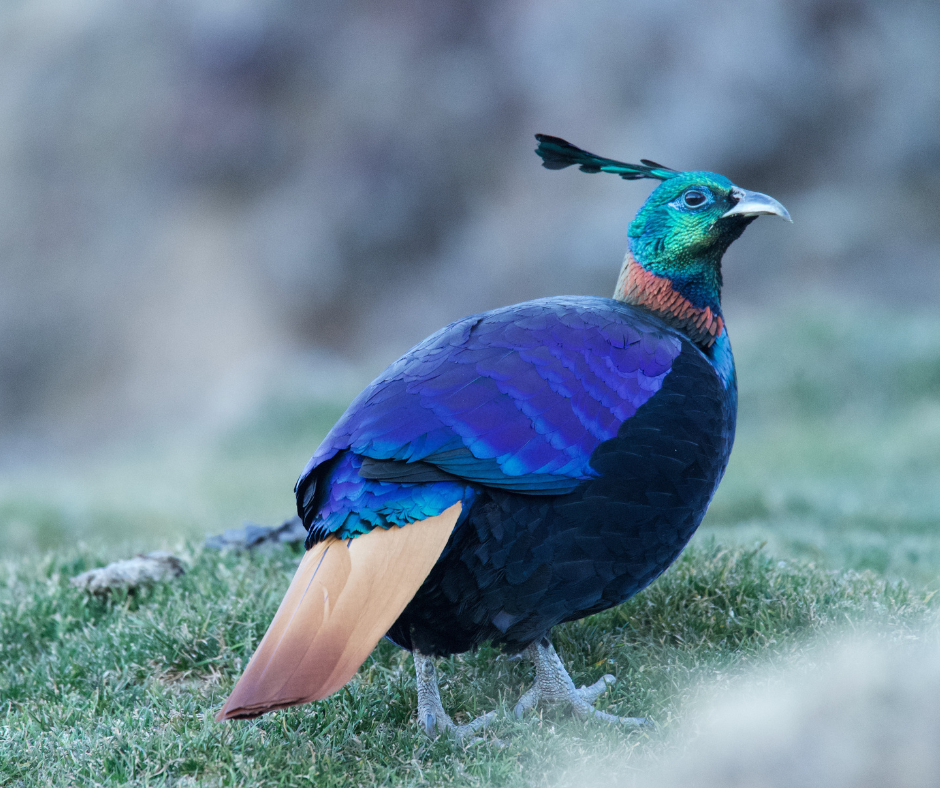
Snow Partridge
Scientific Name: Lerwa Lerwa
Season: Year-round but more visible during winter.
Description:
The Snow Partridge exhibits a blend of white, grey, and brown plumage, creating a natural camouflage against rocky and snowy terrains. Both males and females display similar coloration.
This bird is primarily terrestrial, often seen foraging on the ground. It’s known to live in small flocks and exhibits a shy nature, making it elusive to observers.
The Snow Partridge’s diet includes various seeds, plants, and occasionally insects.
Habitat: Alpine regions and rocky slopes.

Griffon Vulture
Scientific Name: Gyps Fulvus
Season: Late autumn to early spring.
Description:
The Griffon Vulture or Eurasian Griffon (Gyps fulvus) is a prominent bird of prey known for its size, power, and crucial role in the ecosystem. Part of the Old World vulture family, it holds a special place in the avifauna of many regions, including the Kuari Pass. With an impressive wingspan that can reach up to 2.8 meters, the Griffon Vulture displays a robust build. Its plumage is primarily pale brown, with a white ruff around the neck and a dark, featherless head.
Known as a soaring vulture, it utilizes thermal currents to glide gracefully over vast distances. Often seen in large congregations, Griffon Vultures feed communally on carcasses.
Habitat: Found in open mountainous regions.

Yellow-billed Blue Magpie
Scientific Name: Urocissa Flavirostris
Season: Spring to summer.
Description:
With a distinctive long tail and bright blue plumage, this magpie stands out. The yellow bill, for which it is named, adds a contrasting touch to its overall appearance. An active and vocal bird, the Yellow-billed Blue Magpie is known for its social behavior and complex calls. Often seen in small groups, it is an inquisitive and highly adaptable bird.
Omnivorous by nature, its diet includes a mix of fruits, insects, small mammals, and even the eggs of other birds.
Habitat: Forested areas and thickets.

Himalayan Woodpecker
Scientific Name: Dendrocopos Himalayensis
Season: Year-round.
Description:
The adult male Himalayan Woodpecker is primarily black and white with a striking red crown. Females typically have a black crown instead. Its spotted white wing feathers and dark tail provide an attractive contrast.
True to the woodpecker family, the Himalayan Woodpecker is known for its drumming on tree trunks as it searches for insects. Its strong beak and specialized tongue enable it to extract insects from bark crevices.
Habitat: Woodland regions, especially coniferous forests.
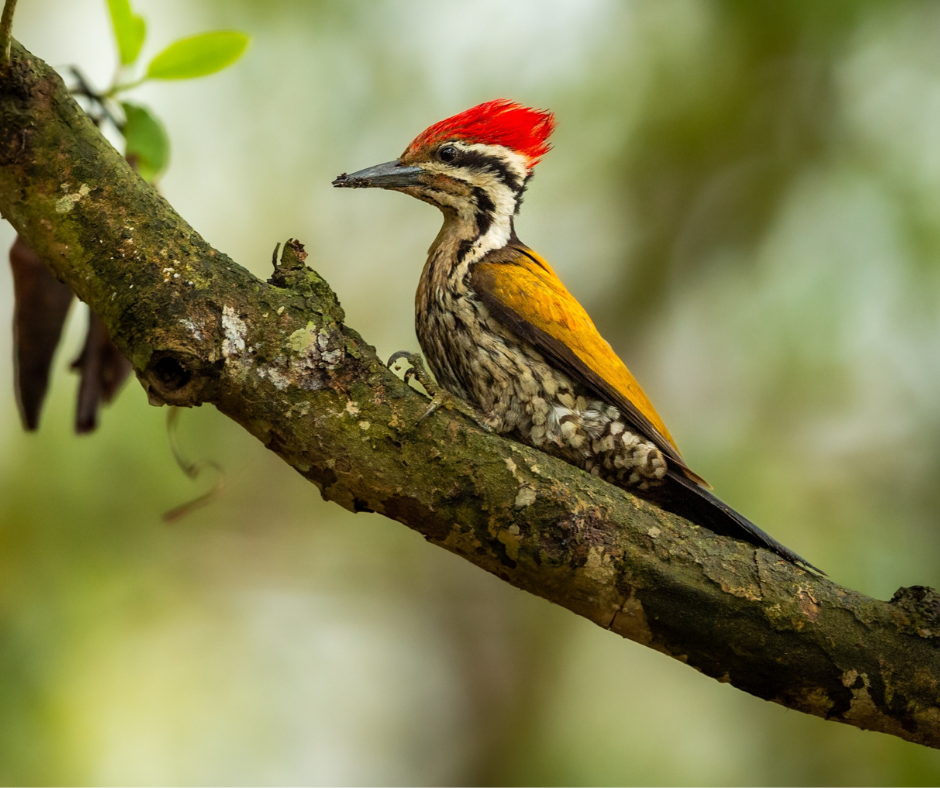
Asian Paradise Flycatcher
Scientific Name: Terpsiphone Paradisi
Season: Spring and summer.
Description:
Males of this species are particularly striking, with long, flowing tail feathers and a glossy black head. They exhibit two color morphs: one with a pure white body and the other with a rufous body. Females are generally rufous-colored and lack the extravagant tail.
Known for its acrobatic flight, the Asian Paradise Flycatcher chases insects on the wing with remarkable agility. Its graceful movements and distinctive tail make it easy to identify.
Primarily insectivorous, this flycatcher feeds on a variety of flying insects, including butterflies, bees, and flies.
Habitat: Deciduous and mixed forests.
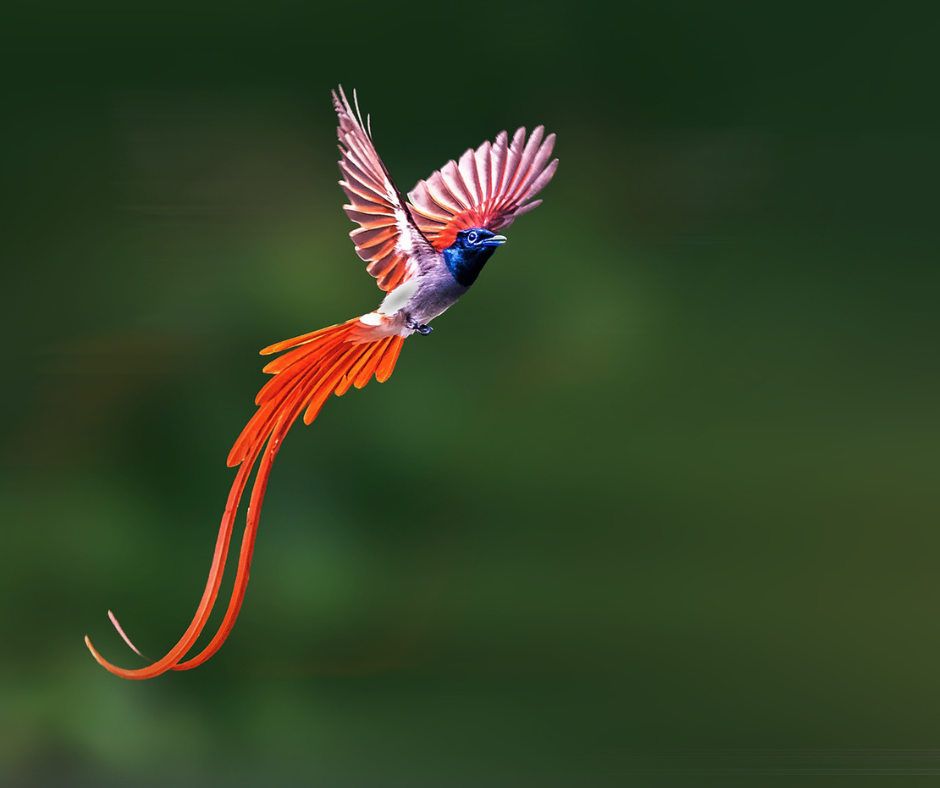
Migratory Species
Kuari Pass region is also a significant hotspot for migratory birds. The complex topography, variations in altitude, and diverse ecosystems create an ideal environment for migratory birds to thrive. Let’s look at some of the commonly found migratory birds in this region
Steppe Eagle
Scientific Name: Aquila Nipalensis
- Season: Winter
- Description: The Steppe Eagle is known for its dark brown plumage, with lighter golden-brown feathers on the nape. Adults display a distinctive set of broad wings and a powerful beak. A soaring bird, the Steppe Eagle utilizes thermal currents to glide over large areas in search of prey. It’s often observed alone or in pairs.
- Migration Pattern: It migrates from Eastern Europe and Western Asia to the warmer climes of the Indian subcontinent during winter.
- Habitat: Prefers open country and mountainous terrains.
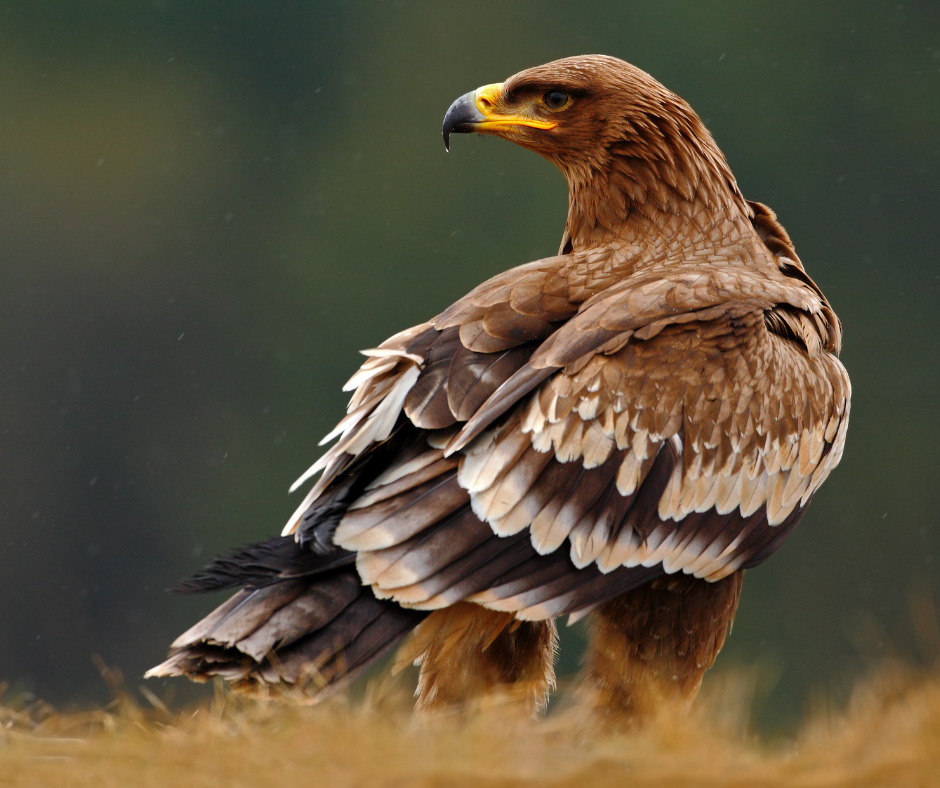
Bar-headed Goose
Scientific Name: Anser Indicus
- Season: Winter
- Description: The Bar-headed Goose is easily recognized by the two dark bars on the back of its white head. The rest of the body is a combination of grey and brown, with a white underbelly. Known for its social behavior, the Bar-headed Goose can often be found in flocks, particularly during migration.
- Migration Pattern: Travels from Central Asia, crossing the Himalayan range to reach the Indian subcontinent.
- Habitat: Wetlands, lakes, and riverbanks.

Lammergeier or Bearded Vulture
Scientific Name: Gypaetus Barbatus
- Season: Winter
- Description: This vulture has a wingspan that can exceed 2.5 meters (8 feet) and is recognizable by its slender, elongated body and wedge-shaped tail. Adults have a creamy-white head with a dark “beard” of bristles beneath the bill, giving it the name “Bearded Vulture.” Approximately 70-90% of its diet consists of bone and bone marrow. The Lammergeier’s highly acidic stomach allows it to digest these hard materials.
- Migration Pattern: Some populations migrate to lower altitudes within the region during the harsh winters.
- Habitat: Mountainous cliffs and rocky outcrops.
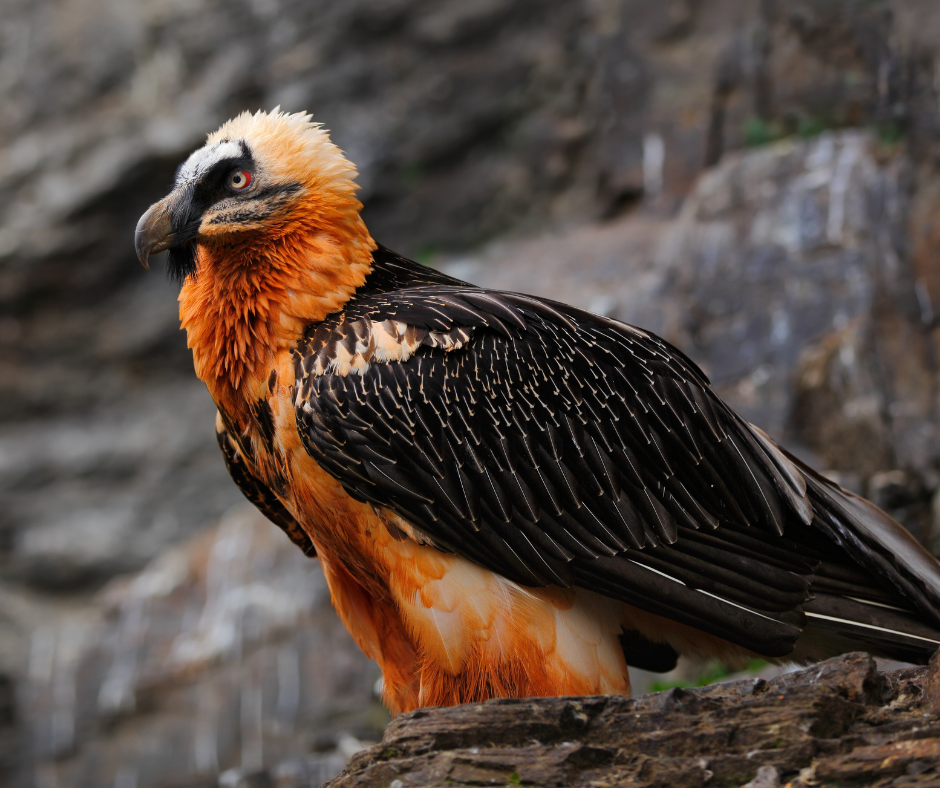
Black Redstart
Scientific Name: Phoenicurus Oochruros
- Season: Winter
- Description: The male Black Redstart is predominantly black or dark grey with a vibrant orange-red tail that is instantly recognizable. Females and younglings are more subdued in color, with a grey-brown appearance and a faint red tail. Often seen flicking its tail, the Black Redstart is an active and restless bird. Its song is melodious, and it frequently sings from exposed perches.
- Migration Pattern: Migrates from Europe to the warmer parts of Asia, including the Indian subcontinent.
- Habitat: Open country, scrublands, and farmlands.
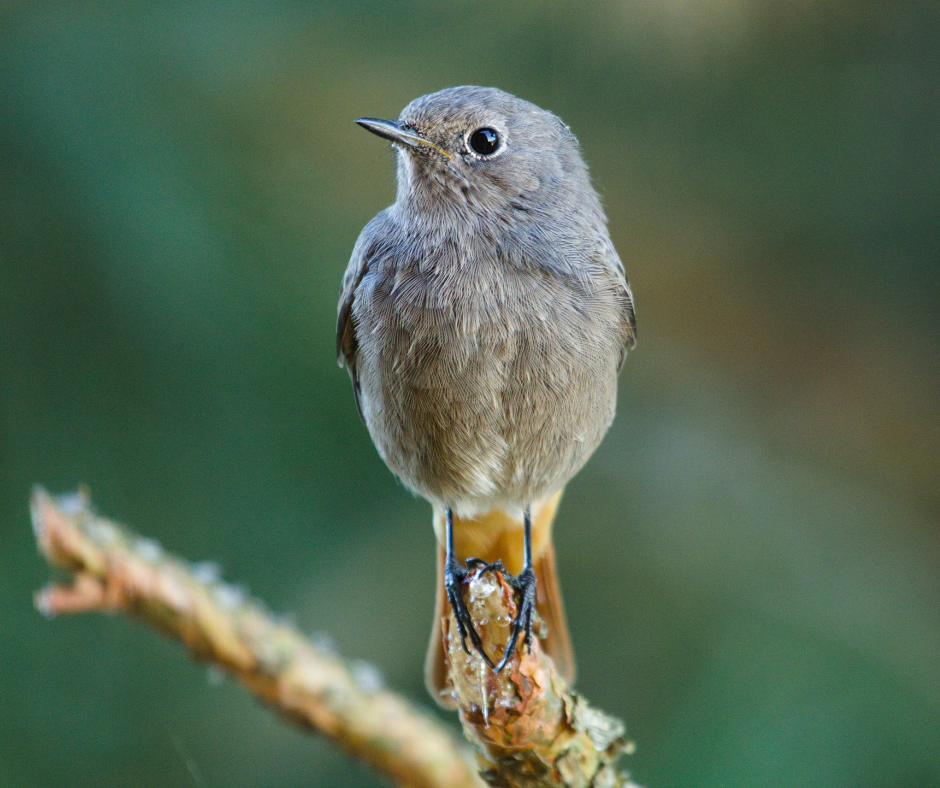
Common Rosefinch
Scientific Name: Carpodacus Erythrinus
- Season: Winter
- Description: The male Common Rosefinch is especially striking, with a rich, rosy-red head, breast, and rump, contrasting with darker wings.Known for its sweet and repetitive song, the male Common Rosefinch often sings from concealed perches.
- Migration Pattern: Moves from Northern Asia to the Indian subcontinent during winter.
- Habitat: Woodlands, gardens, and shrubbery.
Conclusion
The Kuari Pass is not only a hiker’s dream but a treasure trove for bird enthusiasts. Its varied landscapes offer different ecological niches, supporting a rich and unique avian biodiversity.
Whether you’re a seasoned ornithologist or a casual nature lover, visiting Kuari Pass across different seasons will undoubtedly present an ever-changing kaleidoscope of avian wonders.
FAQs about the Kuari Pass Trek
Q1: Where is the Kuari Pass Trek located?
A1: Kuari Pass Trek is situated in the Chamoli district of Uttarakhand, India. It is part of the Garhwal Himalayan region.
Q2: What is the altitude of Kuari Pass?
A2: Kuari Pass is situated at an altitude of approximately 3,650 m above sea level.
Q3: What is the difficulty level of the Kuari Pass Trek?
A3: The trek is considered moderately difficult, making it suitable for both beginners with good fitness levels and experienced trekkers.
Q4: What is the best time to undertake the Kuari Pass Trek?
A4: The best time to trek Kuari Pass is during the pre-monsoon months (April to June) and post-monsoon months (September to November). The trek is also possible in winter but is more challenging due to snow.
Q5: How long does the trek typically take?
A5: The Kuari Pass Trek typically takes around 8 days to complete, depending on the chosen route and pace.
Q6: What kind of views can one expect on the Kuari Pass Trek?
A6: The trek offers panoramic views of prominent Himalayan peaks such as Nanda Devi, Dronagiri, Chaukhamba, and Kamet, along with beautiful meadows and dense forests.
Q7: What is the usual Kuari Pass Trek Price
A7: The Kuari Pass trek is 7 nights, and 8 days, and costs Rs 19,999 per person. To check the inclusions and exclusions, you may please visit this link.
